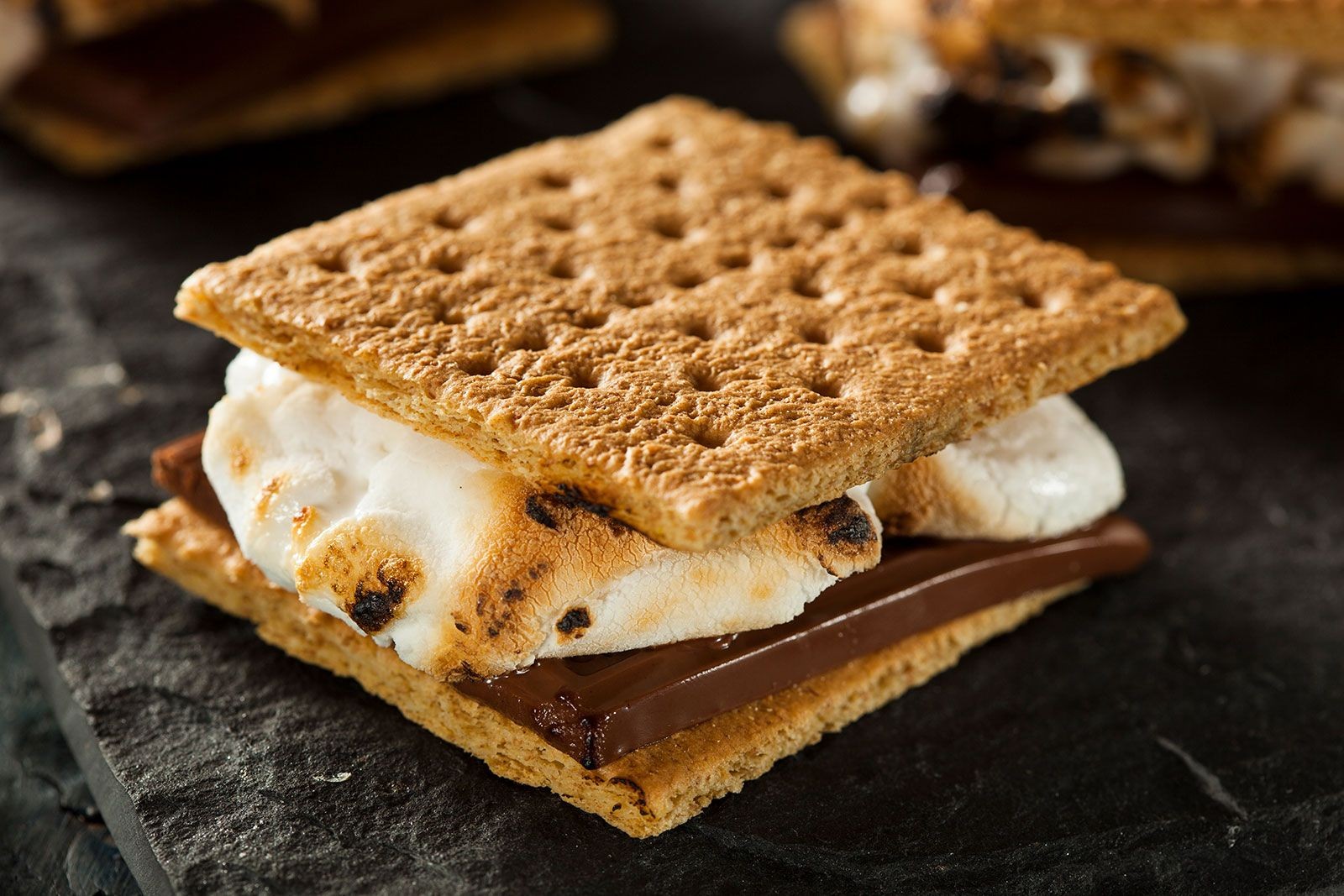Graham crackers, a staple in pantries and a key ingredient in beloved treats like s’mores and pie crusts, are more than just a subtly sweet snack. Their history is deeply intertwined with the 19th-century health reform movement and the beliefs of a clergyman named Sylvester Graham. But Why Were Graham Crackers Invented in the first place? The answer lies in a fascinating blend of religious conviction, dietary reform, and a quest for a healthier society.
The Visionary Behind the Cracker: Sylvester Graham and His Health Crusade
To understand why graham crackers came to be, it’s essential to know about Sylvester Graham, the man behind them. Born in 1794, Graham was an American Presbyterian minister and a prominent advocate for dietary reform during the Victorian era. This period was marked by significant social and cultural changes, including a growing concern about health and morality. Graham, like many reformers of his time, was deeply concerned about what he perceived as the detrimental effects of modern diets and lifestyles on both physical and spiritual well-being.
Graham believed that the prevailing diets of the 19th century, often rich in meat, fats, and refined foods, were the root cause of many societal ills. He was particularly focused on the perceived negative impacts of “sexual excess,” which he believed was fueled by rich and stimulating foods. Influenced by earlier proponents of vegetarianism and abstinence, Graham became a fervent preacher of a lifestyle centered on temperance in all things, especially diet. He traveled extensively, lecturing across New England and the mid-Atlantic states, gaining both devoted followers and vehement critics for his radical health ideas.
The “Graham Diet” and the Birth of the Graham Cracker
At the heart of Graham’s teachings was the “Graham Diet,” a regimen designed to promote physical and moral purity. This diet was based on whole, unprocessed foods and strictly excluded a wide range of items considered unhealthy or overly stimulating. Graham advocated for a diet rich in fresh fruits, vegetables, whole wheat bread, and coarse cereals. He vehemently opposed meat, fats, spices, condiments, coffee, tea, and alcohol. He also promoted other lifestyle changes such as regular exercise, fresh air, cold baths, and abstaining from tobacco. These were radical ideas for the time, challenging the norms of 19th-century American cuisine.
The graham cracker was born directly from these dietary principles. Invented in 1829, it was intended to be a staple food within the Graham Diet. The original graham cracker was a far cry from the sweet treat we know today. It was made with unsifted, coarsely ground whole wheat flour – known as “graham flour” – and baked without fat or refined sugar. The result was a bland, unsalted cracker, more akin to a whole wheat saltine or bran cracker. Its purpose was not indulgence, but rather to provide a wholesome, fiber-rich food that aligned with Graham’s health philosophy and would help suppress what he considered unhealthy carnal urges by being bland and not stimulating.
From Health Food to Sweet Treat: Commercialization and Modern Graham Crackers
Sylvester Graham never commercialized his graham cracker or patented his graham flour. This opened the door for other bakers to adapt and modify his original recipe. Over time, the graham cracker evolved significantly. Early modifications, like those suggested in J. Thompson Gill’s 1881 book, introduced sweeter and softer versions using ingredients like lard and molasses.
The real transformation of the graham cracker came with mass production. In 1898, the National Biscuit Company (Nabisco) began producing graham crackers on a large scale, further altering the recipe to appeal to a wider audience. By 1925, Nabisco launched Honey Maid graham crackers, a much sweeter iteration that moved even further away from Graham’s original intent.
Modern graham crackers bear little resemblance to Sylvester Graham’s original vision. They are typically made with refined white flour, sugar, and trans fats, and flavored with honey, cinnamon, or even chocolate. They have become a sweet snack and a versatile ingredient in desserts, far removed from their origins as a component of a strict health regimen.
Beyond Snacking: Popular Uses of Graham Crackers and Their Enduring Legacy
Despite their deviation from Graham’s original recipe and purpose, graham crackers have secured a lasting place in American cuisine. They are enjoyed as snacks, often paired with peanut butter or spreads. Crucially, they are a key ingredient in iconic American desserts. S’mores, the campfire treat of toasted marshmallows and chocolate sandwiched between graham crackers, are a testament to their enduring popularity. Graham cracker crusts form the base for countless pies and cheesecakes, adding a distinctive flavor and texture. They are also used in dishes like moon pie and Filipino Mango Royale.
 S'mores, a popular dessert featuring graham crackers, marshmallows, and chocolate.
S'mores, a popular dessert featuring graham crackers, marshmallows, and chocolate.
In conclusion, graham crackers were invented not as a delicious snack, but as a fundamental part of Sylvester Graham’s broader health reform movement. They were conceived as a bland, wholesome food to promote both physical and moral well-being, according to his 19th-century beliefs. While modern graham crackers have transformed into sweeter, more indulgent treats, their origin story remains a fascinating glimpse into the history of health and dietary reform, and the surprising beginnings of a now-ubiquitous snack.